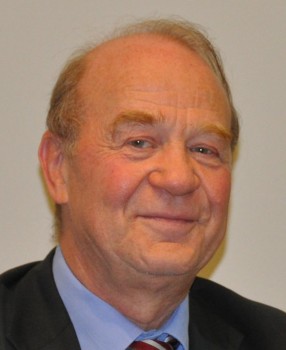 Christoph Theobald
Christoph Theobald
L’Église au sein de l’histoire messianique de l’humanité
Pour une vision polyédrique de la Communio Ecclesiarum à l’âge de l’anthropocène
L’enjeu de cet article est de faire comprendre, dans un même mouvement, ce qui, à l’âge de l’anthropocène, advient à notre commune humanité sur notre terre et ce que la Communio Ecclesiarum est appelée à devenir pour être fidèle à sa mission. Presque soixante ans après l’ouverture de Vatican II, la convocation d’un « synode sur la synodalité » en octobre 2021 élargit la manière de procéder du Concile à l’ensemble des Églises particulières et active ainsi leur statut œcuménique de « peuple messianique » (Lumen gentium, 9). On commencera par expliciter l’enjeu de cette focalisation sur une conception messianique de l’histoire et les possibilités herméneutiques qu’elle nous offre dans la tâche d’interprétation de la situation actuelle de l’humanité sur notre terre et de reconfiguration de la mission de l’Église. On reviendra ensuite sur le concile Vatican II et on précisera comment cette vision messianique peut éclairer les apories du corpus conciliaire, qui se sont révélées lors du processus de réception, et ouvrir ses potentialités d’avenir. Ce qui permettra, pour finir, de penser la configuration synodale de l’Église au sein de notre histoire messianique et d’en esquisser quelques marqueurs sur le « syn-hodos » déjà engagé.
The Church within the Messianic history of humanity
For a polyhedric vision of the Communio Ecclesiarum in the Anthropocene Age
The objective of this article is to help to understand both what our common humanity is becoming on Earth in the Age of the Anthropocene and what the Communio Ecclesiarum is called upon to become in order to remain faithful to its mission. Nearly sixty years after the opening of Vatican II, the convening of a ‘Synod on Synodality’ in October 2021 has widened the Council’s work to the ensemble of individual Churches and thus activates their ecumenical status of ‘Messianic people’ (Lumen gentium, 9). First, we try to articulate the stakes involved in focussing on a Messianic conception of history and the hermeneutic possibilities it affords us in the task of interpreting the present situation of humanity on our Earth and the reconfiguration of the mission of the Church. Then, we shall come back to Vatican II to point out how this Messianic vision can elucidate the aporias of the Conciliary corpus that were revealed during the process of reception and can open up to potentialities for the future. Finally, this will enable us to imagine the synodal configuration of the Church within our Messianic history and highlight some of the outstanding points of the syn-hodos that is already underway.






Vous souhaitez lire l'article dans son intégralité
Vous êtes abonné à RSR
En préparation
Si vous n'êtes pas abonné à RSR
> abonnez-vous en ligne et téléchargez gratuitement toutes les archives
> ou achetez le numéro concerné pour le recevoir à domicile
> ou téléchargez immédiatement l'article (3 TTC ou gratuit si l'article a plus de 5 ans de parution)